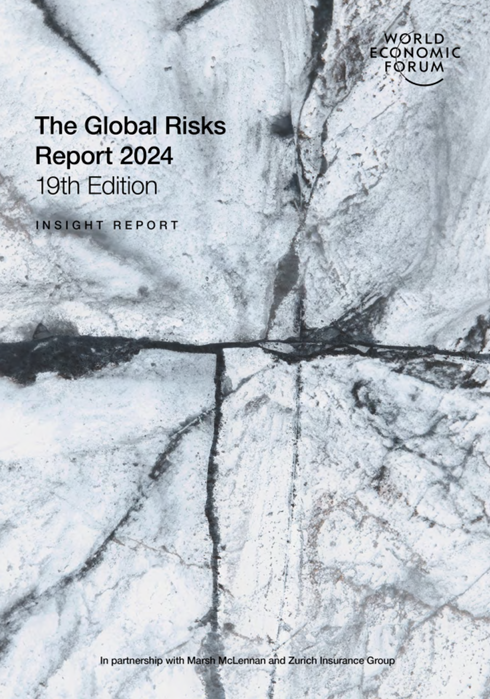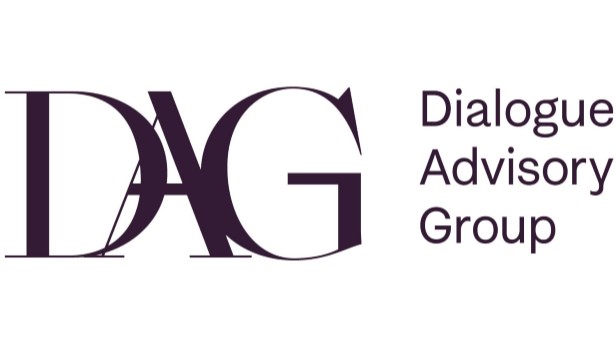The report identifies the most pressing short and long-term global risks, notably highlighting their interconnectedness. These risks notably include climate change, societal polarization, and economic downturns. It most crucially emphasizes the urgent need to combat misinformation and disinformation, the most severe short-term risks.
On the other hand, climate-related risks like extreme weather events, biodiversity loss, and ecosystem collapse dominate the long-term concerns. Consequently, the report underlines the crucial need for international collaboration to manage these risks, particularly in areas vital for human security and prosperity. Here is a concise summary of the key points of the report:
- Environmental Risks: Environmental risks, such as extreme weather, dominate the short and long-term risk landscape, with the possibility of reaching irreversible climate tipping points in the next decade.
- Social Polarization and Technological Risks: Social polarization and misinformation stand out as severe risks, potentially exacerbated by-elections in various countries and the misuse of technology.
- Economic Pressures: The cost of living crisis and economic risks such as inflation and economic recession are major concerns for 2024, particularly affecting vulnerable economies.
- Geopolitical Tensions and Security: Emerging armed interstate conflicts are significant risks, with technology and geopolitical tensions creating new security risks.
Overview
Chapter 1: Global Risks 2024: At a turning point
Presents a comprehensive overview of the current global risk landscape, analyzing risks over one- and two-year periods. Following this, it explores selected risks predicted to increase by 2026, focusing on the aftermath of the COVID-19 pandemic and the ongoing Russia-Ukraine conflict. Despite societal tensions marked by periodic upheaval, the global system has shown remarkable resilience.
Interestingly, contrary to expectations, a recession did not occur last year. However, the future remains uncertain due to economic instability, misinformation, and escalating conflict. Therefore, this chapter provides an essential foundation for understanding the immediate risks and uncertainties that decision-makers must navigate.
Subsections
1.1 The world in 2024
This section provides an overview of the global landscape of 2024, establishing the context for the current global risks discussion. It outlines the prevailing geopolitical, economic, and social conditions shaping the world at the time of the report’s publication.
1.2 The path to 2026
This subsection explores the trajectory leading up to 2026, highlighting the anticipated trends, challenges, and opportunities that may unfold shortly. It discusses the potential scenarios and developments that could impact the global risk landscape over the next few years.
1.3 False information
The section on false information addresses the spread of misinformation and disinformation in the digital age, emphasizing its detrimental effects on societies and decision-making processes. It may discuss the risks of manipulating information and the need for strategies to combat misinformation.
1.4 Rise in conflict
This section explores the rising levels of global conflict. It investigates the reasons and outcomes of growing tensions between nations, regions, or social groups. The potentially destabilizing impact of conflict on peace, security, and economic stability is highlighted, underscoring the importance of conflict resolution and prevention.
1.5 Economic uncertainty
The discussion on economic uncertainty delves into the global economy’s challenges and vulnerabilities. These include market volatility, trade tensions, and financial risks. It often assesses the possible effects of economic uncertainty on growth, investment, and employment prospects, underscoring the importance of resilient and adaptive economic policies.
1.6 Looking ahead
This section provides a forward-looking perspective on the global risk landscape. It discusses emerging trends, potential risks, and opportunities that decision-makers must consider. It also encourages proactive planning, risk mitigation strategies, and collaboration to address future challenges effectively.
Chapter 2: Global Risks 2034: Over the limit
Chapter 2 of the Global Risks Report 2024, “Global Risks 2034: Over the limit,” highlights the risks anticipated to peak within the next decade. This chapter explores the structural forces, including geostrategic, environmental, demographic, and technological shifts, shaping 2034.
It discusses high-risk scenarios such as a worrying 3°C world, the harmful effects of AI and advanced technologies, biodiversity loss, potential ecosystem collapse, chronic health issues, resurgence of infectious diseases, and increasing cyber insecurity.
Notably, the chapter emphasizes the interconnected nature of these risks and strongly advocates for proactive measures to mitigate them. It urges decision-makers to act now, scrutinize potential challenges, and steer towards a positive trajectory to build resilience against future uncertainties.
Subsections
2.1 The world in 2034:
This subsection offers a speculative view of the global landscape projected for 2034. It might delve into potential societal, economic, environmental, and technological shifts that could mould the future. It provides insights into plausible scenarios and potential challenges.
2.2 Structural forces
The discussion on structural forces explores the fundamental trends and dynamics propelling global change. This may involve changing power dynamics, demographic shifts, technological progress, and environmental challenges. These factors are predicted to shape the future trajectory of global risks and opportunities.
2.3 A 3°C world
This section explores the potential consequences of global warming and climate change, focusing on a scenario where global temperatures rise by 3°C. It examines the impacts of this temperature increase on ecosystems, economies, societies, and global stability, underscoring the urgency of climate action to prevent or mitigate these severe outcomes.
2.4 AI in charge
The discussion on AI in charge considers the implications of advanced artificial intelligence technologies having substantial influence and control in different societal aspects. This discussion may delve into AI governance, ethics, and decision-making risks, posing questions about the potential repercussions of granting excessive power to AI systems.
2.5 The end of development?
This subsection may examine challenges to traditional models of development and progress, considering factors that could hinder or disrupt pathways to economic growth, social advancement, and human well-being. It discusses emerging risks that could impede global development efforts and the need for innovative approaches to address these obstacles.
2.6 Crime wave
The section on the crime wave likely explores the evolving landscape of organized crime, illicit activities, and security threats in a globalized world. It may analyze the intersections between transnational criminal networks, disruptive technologies, and weakened state capacities, highlighting the potential for crime to become a pressing global risk.
2.7 Preparing for the decade ahead
This part focuses on the importance of strategic preparedness and proactive measures to address the challenges and uncertainties anticipated in the coming decade. It may discuss the need for resilience-building, risk mitigation strategies, and collaborative efforts to navigate the complex global risk landscape and shape a more positive trajectory for the future.
Chapter 3: Responding to global risks
Chapter 3 of the Global Risks Report 2024, “Responding to Global Risks,” comprehensively explores strategies to address interconnected challenges. Specifically, it discusses responses to global risks, considering their evolving nature and the undeniable need for coordinated action in a fragmented geopolitical environment.
The chapter emphasizes the importance of local strategies, innovative efforts, group actions, and international coordination in managing risks. Additionally, it openly recognizes various vulnerabilities that complicate responses to global issues like pandemics, geopolitical conflicts, Earth system changes, and the negative impacts of new technologies.
Furthermore, the chapter underscores the critical role of cooperation and innovation in building resilience against emerging threats. It staunchly advocates for proactive, collective responses to global risks, providing valuable insights, best practices, and recommendations to navigate these complexities. Ultimately, the goal is to promote a sustainable future.
Subsections
3.1 Localized strategies
This subsection discusses the importance of local strategies in effectively addressing global risks. It might emphasize the roles of communities, organizations, and governments in customizing preparedness and resilience to their unique contexts. Such a localized approach can strengthen the risk management framework.
3.2 Breakthrough endeavors
This section stresses the importance of innovative research for better risk management. Novel solutions can improve global risk anticipation, response, and mitigation. Stakeholders can proactively address challenges for a resilient future by promoting innovation and investing in transformative initiatives.
3.3 Collective actions
The section on collective actions emphasizes the need for collaboration in addressing global risks. It discusses resource pooling, expertise sharing, and coordinated responses from individuals, organizations, and nations. It underscores how collective actions can magnify impact, utilize diversity, and encourage shared responsibility, promoting a sustainable, secure world.
3.4 Cross-border coordination
Cross-border coordination discussion highlights the importance of international collaboration in handling global risks. It may explore the challenges and opportunities in aligning international responses. Through such coordination, stakeholders can enhance information sharing, align strategies, and strengthen collective resilience against global risks.
3.5 Conclusion
The conclusion of Chapter 3 synthesizes insights and recommendations for global risk response. It summarizes strategies and best practices, emphasizing proactive risk management, collaboration, and innovation. The conclusion encourages prioritizing resilience-building, collective action, and cross-border cooperation to tackle volatile risks and shape a sustainable future.



